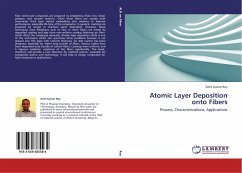In this thesis quantum chemical methods have been
applied to study the tribology of
methylated diamond and cubic and hexagonal boron
nitride. Interaction energies between
surfaces have been calculated from which friction
coefficients are derived. The influence
of the size and the nature of the model representing
the surface have been examined.
The use of periodic models for friction studies has
advantages. Periodic models
circumvent the difficulties typical to cluster models
and produce friction coefficients in close agreement
with experimental studies. The studied case of ice-Ih
sliding on h-BN represents a novel application of
periodic quantum chemical methods for heterogeneous
friction system. Tribochemical reactions were found
to occur in methylated diamond on methylated diamond
and in ice-Ih on h-BN sliding. B3LYP method was shown
to be appropriate for friction and tribochemical
reaction studies.
The studies of diamond, c-BN and h-BN yielded atomic
level information of friction and tribochemical
reactions. Such information can be applied
to design surfaces with tailored frictional
properties and choosing proper materials for
frictional systems.
applied to study the tribology of
methylated diamond and cubic and hexagonal boron
nitride. Interaction energies between
surfaces have been calculated from which friction
coefficients are derived. The influence
of the size and the nature of the model representing
the surface have been examined.
The use of periodic models for friction studies has
advantages. Periodic models
circumvent the difficulties typical to cluster models
and produce friction coefficients in close agreement
with experimental studies. The studied case of ice-Ih
sliding on h-BN represents a novel application of
periodic quantum chemical methods for heterogeneous
friction system. Tribochemical reactions were found
to occur in methylated diamond on methylated diamond
and in ice-Ih on h-BN sliding. B3LYP method was shown
to be appropriate for friction and tribochemical
reaction studies.
The studies of diamond, c-BN and h-BN yielded atomic
level information of friction and tribochemical
reactions. Such information can be applied
to design surfaces with tailored frictional
properties and choosing proper materials for
frictional systems.








